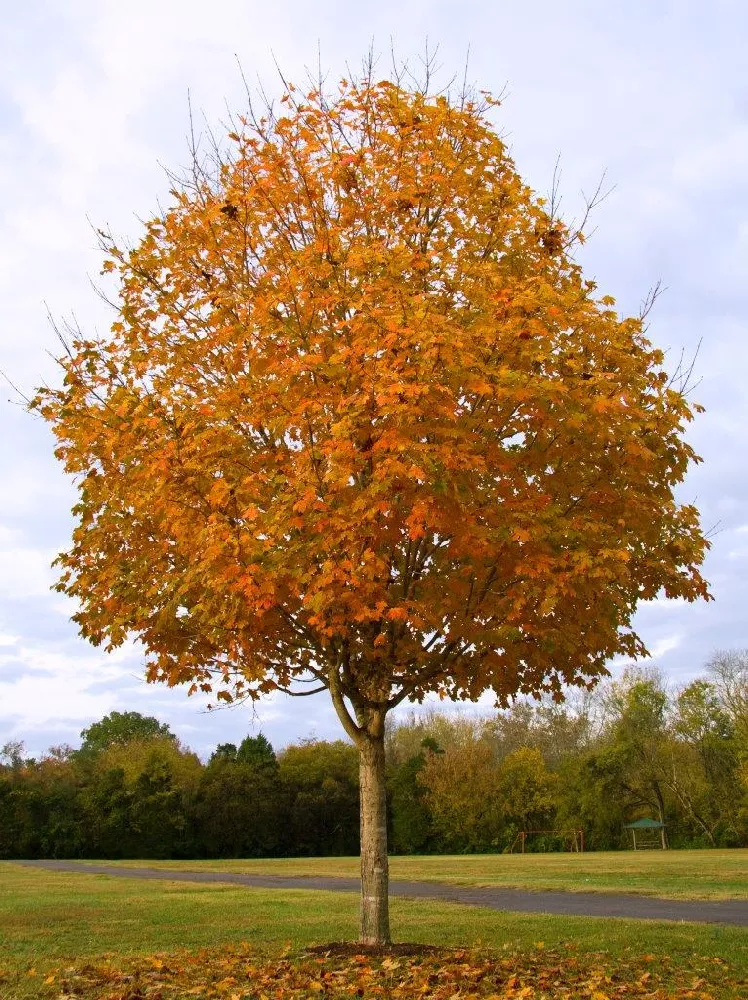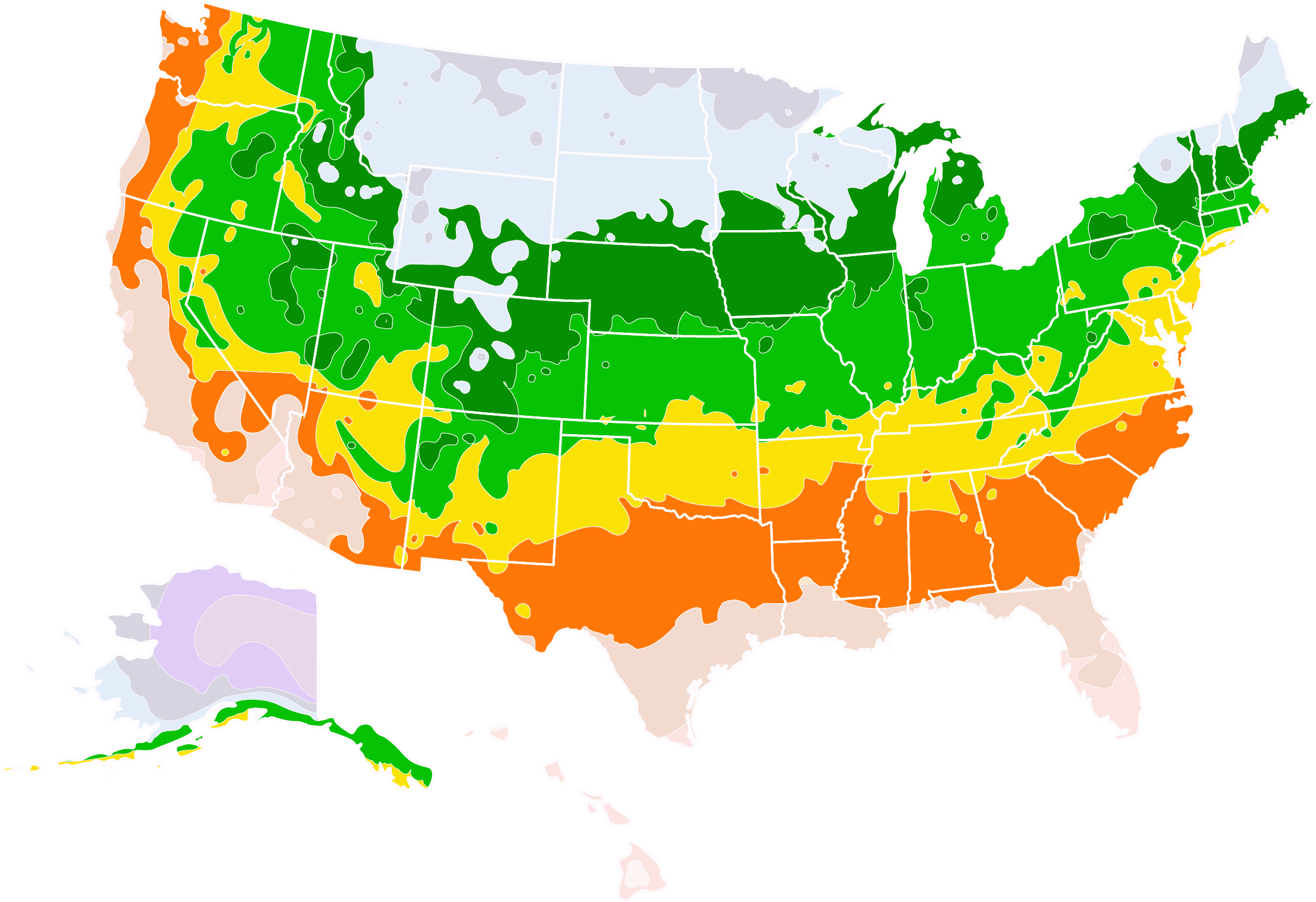- Home >
- Maple Trees >
- Coral Bark Japanese Maple
Coral Bark Japanese Maple for Sale - Buying & Growing Guide
- Ships in 1-2 days
- 1-Year Warranty Eligible
- Pots or accessories are not included unless specified in the product options.
Shipping Details:
Once your order is shipped, you’ll receive an email with a tracking number and estimated delivery date. Most orders ship immediately, but some items are seasonal and may only ship in spring or fall. These products are noted on the website.
While all Japanese maple trees hold a distinct beauty, the cultivar we call coral bark Japanese maple, or Acer palmatum 'Sango-Kaku,' stands out from the rest in more ways than one. First, as the name implies, the bark of this small tree can have an intense red color. This plant also develops a narrower canopy and a slightly more upright form than other Japanese maple varieties. To top it all off, the vibrant foliage colors the coral bark Japanese maple tree boasts in autumn make it an even more unique and valuable addition to your garden.
- The bark on newer growth is a deep red color.
- The coral bark Japanese maple tree has a graceful upright form compared to other cultivars.
- It boasts strong orange and red fall foliage hues.
Plant Care
Sunlight

This Japanese maple tree survives in both full sunlight and partial sunlight.
Watering
Water about once per week in most cases. Water newly planted trees every day.
Fertilizing

Feed once per year with a balanced fertilizer or one with lower nitrogen.
Planting and Care
Planting instructions
Extreme heat and freezing winds pose a threat to the foliage of newly planted coral bark Japanese maples. You’ll want to protect your tree from both these threats when choosing a planting location by avoiding places that are open to excessive sun exposure in warmer months and freezing winds in late winter. This tree will also adapt most quickly if the soil in your planting area is high in organic matter, moist but well-draining, and somewhat acidic. When these conditions are in place, plant your tree in a hole that is at least twice as wide as the root ball.
Watering and nutrients
After you plant your coral bark Japanese maple tree, give it water once per day for the first few weeks, then reduce your watering schedule to once every few days. Once the tree has established itself successfully, it usually won’t need water more than once per week in the growing season. Fertilize your coral bark Japanese maple once per season in the early spring. Use a fertilizer that has lower volumes of all three main nutrients, especially nitrogen, as fertilizers of higher potency are more likely to cause quick but weak new growth for this tree.
Pollination
Like all popular Japanese maple varieties, the coral bark Japanese maple blooms in spring with flowers that are so small that you’ll likely fail to notice them. These flowers arrive just after the leaves and can have a purple color. One tree will hold both male and female reproductive structures, which makes insect pollination easy, leading to the development of this plant’s fruits, a set of dangling winged samara that are each less than an inch long.
Pruning
Coral bark Japanese maples won’t need pruning during their first few years of life, and their pruning needs remain low throughout their entire lifespan. In some instances, pruning this tree too much can be a detriment; it prompts the tree to quickly send out new growth which often ends up being weak and detracting from the beauty of this plant’s natural form. If you prune this plant, do so in spring, and be sure to be minimal with your branch removal.
Pests, diseases, and animals
Japanese maple trees can face many insect problems, including infestations of Japanese beetles and numerous insects that will attack the leaves and bark. Along with those insect-related issues, infections can also occur in a coral bark Japanese maple tree. The harmful fungus known as Botrytis can harm this plant, as can some leaf-damaging bacteria like anthracnose. You should also watch out for problems like tip blight, leaf spots, and browning foliage, the last of which is often the result of overwatering.
Achieving maximum results
One of the downsides of the coral bark Japanese maple is that it is often less heat-tolerant than other Japanese maple cultivars. This problem is most noticeable in the southern portions of this plant’s range. If you live in those areas, aim to grow this plant in partial shade exclusively, rather than full sun. Compared to other Japanese maples, the coral bark Japanese maple can also be a bit more twiggy in its branching habit. This less-robust habit emphasizes the need to be judicious in how you stimulate new growth via pruning.
FAQs
Can a coral bark Japanese maple tree live in full sun?
A coral bark Japanese maple tree can survive in full sunlight if it lives in a colder region. In warmer areas, this cultivar may struggle to survive in full sun exposure during the summer months. Partial sunlight is far more advantageous in such settings, as it prevents the coral bark Japanese maple from experiencing scorch and drying out overall. Even if you live in a cooler zone, if you grow this tree in full sunlight, you should consider giving it more water during heat waves to prevent excessively dry conditions.
What color are a coral bark Japanese maple's leaves?
Although the bark of a coral bark Japanese maple is often the main attraction, the foliage is also noteworthy and shows a dynamic color change throughout the year. In spring, the leaves emerge with a reddish tinge, then become light green through the summer. In fall, the leaves are most impressive. They are primarily golden or orange, with subtle hints of red.
How large does a coral bark Japanese maple grow?
A coral bark Japanese maple will grow to be about as tall as most other Japanese maple varieties. At maturity, you can expect a maximum height of between 20 and 30 feet. The spreads of other Japanese maples often match their heights. However, this is not the case for the coral bark Japanese maple. It is more upright and narrow, with a maximum spread of around 15 to 20 feet wide.
Compare Similar Products
Customer Reviews
 Coral bark Japanese maple
Coral bark Japanese mapleLooking good, now let's wait
 survey
surveyso far very good
 Coral Bark
Coral BarkOverall a good experience. Although the top branches were missing leaves, and by the looks of them could possibly be trying to recover from shipping stress or drought, but all and all the tree seems to be weathering it's recent shipping woes. Time will tell.
 Coral bark maple
Coral bark mapleTree arrived in a timely manner, and looks nice and healthy.
 Great tree
Great treeLove the tree, can't wait for it's spring foliage.
 The coral bark young trees
The coral bark young treesThe coral bark young trees came in excellent condtion
You can't add more Product Name - Product size to the cart.
OK








